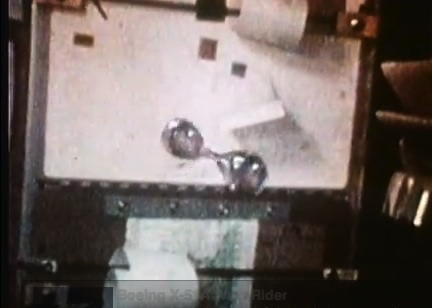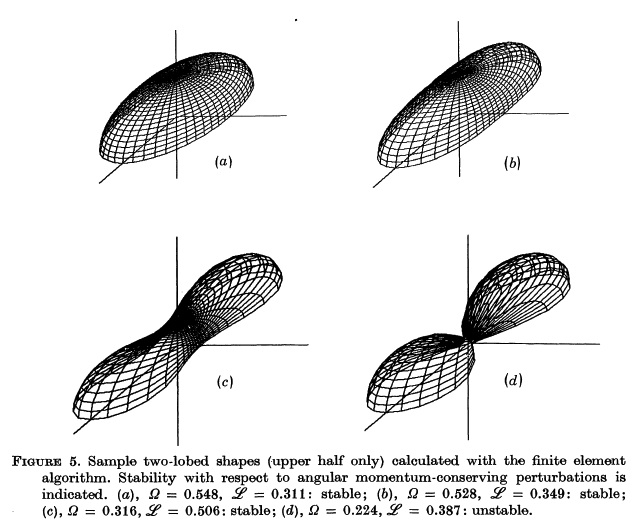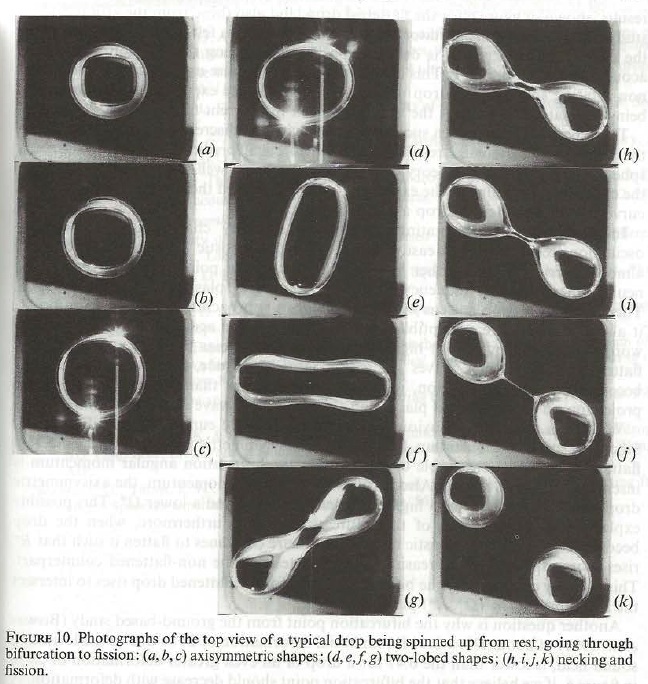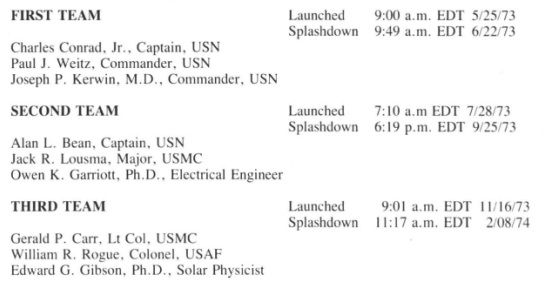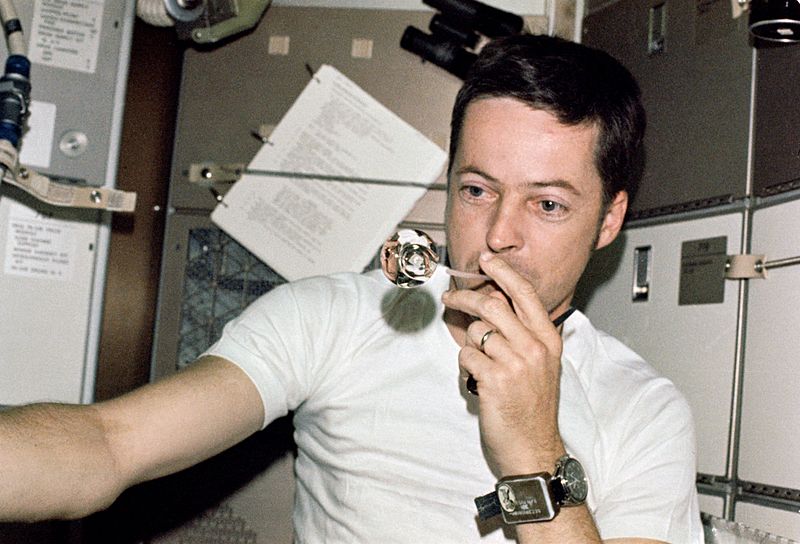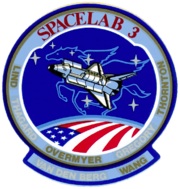Difference between revisions of "User:Tohline/ThreeDimensionalConfigurations/BinaryFission"
(→Drop Dynamics Experiments: Added reference to Wang et al. (1986)) |
(→Drop Dynamics Experiments: Clarify context of Spacelab III mission) |
||
| Line 58: | Line 58: | ||
** As is documented in [http://web.physics.ucsb.edu/~lecturedemonstrations/Linked%20files/Media%20library/Skylab%20guide%20(videodisc).pdf A Teacher's Guide for the Skylab Physics Videodisc] the content of all 12 Super 8 film loops was made available for distribution in [http://en.wikipedia.org/wiki/Videodisc Videodisc] format in 1987 through the [http://www.aapt.org/ AAPT]. | ** As is documented in [http://web.physics.ucsb.edu/~lecturedemonstrations/Linked%20files/Media%20library/Skylab%20guide%20(videodisc).pdf A Teacher's Guide for the Skylab Physics Videodisc] the content of all 12 Super 8 film loops was made available for distribution in [http://en.wikipedia.org/wiki/Videodisc Videodisc] format in 1987 through the [http://www.aapt.org/ AAPT]. | ||
** The YouTube video referenced in and linked to the caption of Figure 1, above, is the digitized version of the Skylab film loop that illustrates fission of a water droplet. | ** The YouTube video referenced in and linked to the caption of Figure 1, above, is the digitized version of the Skylab film loop that illustrates fission of a water droplet. | ||
<div align="center"> | <div align="center"> | ||
| Line 82: | Line 81: | ||
</div> | </div> | ||
* '''<font color="darkblue">Space Shuttle Flights</font>''' | * '''<font color="darkblue">Space Shuttle Flights</font>''': Experiments illustrating the dynamical behavior of liquid drops were also conducted during several space shuttle missions. At least some of the experiments were performed with the aid of a "Drop Physics Module (DPM)" inside the "portable" United States Microgravity Laboratory (USML) that was housed in the shuttle's payload bay. | ||
** [[File:fluid_drop.jpg|100px|right|frame|USML-1 Droplet Fission]] | ** [[File:Sts51b_patch.jpg|100px|right|Spacelab 3]]Wang, Trinh, Croonquist, and Elleman (1986; [http://adsabs.harvard.edu/abs/1986PhRvL..56..452W Physical Review Letters, 56, 452]) report results from a controlled drop dynamics experiment that was conducted during the "Spacelab III mission" (see the final acknowledgement paragraph of their paper), which took place during shuttle flight [http://en.wikipedia.org/wiki/STS-51-B STS-51-B (29 April - 6 May 1985)]. Taylor Wang — one of the authors of this ''PRL'' publication — flew as one of the seven members of the space shuttle crew, specifically as Payload Specialist 2. | ||
** [[File:fluid_drop.jpg|100px|right|frame|USML-1 Droplet Fission]]Another mission — [http://www.nasa.gov/mission_pages/shuttle/shuttlemissions/archives/sts-50.html USML-1 during shuttle flight STS-50] — took place in early 1992. According to [http://www.jpl.nasa.gov/releases/95/release_1995_9571.html information provided by NASA/JPL's public information office], "… the transition of rotating liquid drops into a 'dog-bone,' or two-lobed shape, was studied in detail …" Detailed results from DPM experiments during the USML-1 mission have been published in the Journal of Fluid Mechanics: T. G. Wang, A. V. Anilkumar, C. P. Lee and K. C. Lin (1994). ''Bifurcation of rotating liquid drops: results from USML-1 experiments in Space.'' [http://dx.doi.org/10.1017/S0022112094002612 Journal of Fluid Mechanics, 276, pp 389-403] | |||
** I think that the three-frame black & white image shown here on the right presents a result from mission USML-1. That is how this image is referenced in an [http://www.phys.lsu.edu/astro/movie_captions/fission.html online discussion of fission] that I put together about a decade ago. | ** I think that the three-frame black & white image shown here on the right presents a result from mission USML-1. That is how this image is referenced in an [http://www.phys.lsu.edu/astro/movie_captions/fission.html online discussion of fission] that I put together about a decade ago. | ||
** The second mission — [http://www.nasa.gov/mission_pages/shuttle/shuttlemissions/archives/sts-73.html USML-2 during shuttle flight STS-73] — took place in the fall of 1995. It does not appear as though the fission of liquid drops was an element of these USML-2 DPM experiments. | ** The second mission — [http://www.nasa.gov/mission_pages/shuttle/shuttlemissions/archives/sts-73.html USML-2 during shuttle flight STS-73] — took place in the fall of 1995. It does not appear as though the fission of liquid drops was an element of these USML-2 DPM experiments. | ||
Revision as of 23:56, 3 January 2014
Fission Hypothesis of Binary Star Formation

|
|---|
| | Tiled Menu | Tables of Content | Banner Video | Tohline Home Page | |
Illustration
|
Figure 1
|
Figure 2
|
Figure 4
|
|
Figure 3
|
||
Related Discussions
Fission in Nuclear Physics
The nuclear physics community also draws an analogy between the fission of a rotating fluid drop and the spontaneous fission of atomic nuclei; see, for example, the figure associated with the Wikipedia discussion of the energetics of nuclear fission.
Drop Dynamics Experiments
[On 1 January 2014, J. E. Tohline wrote ...] As I was putting this chapter together, I had difficulty documenting the various drop dynamics experiments that have been conducted by astronauts in various Earth-orbiting (zero <math>g</math>) environments. Here is the relevant information that I have found, to date:
- Skylab (circa 1973-1974): Experiments showing the fission of liquid drops were evidently conducted during the Skylab 2, Skylab 3, and Skylab 4 missions.
- As has been documented in a short film review written by Howard Voss and published in the American Journal of Physics (44/10, 1021, Oct 1976), film footage from a variety of Skylab experiments was produced by NASA, edited by Thomas Campbell & Robert Fuller, and, beginning in 1976, distributed as 12 Super 8 film loops by the American Association of Physics Teachers (AAPT).
- As is documented in A Teacher's Guide for the Skylab Physics Videodisc the content of all 12 Super 8 film loops was made available for distribution in Videodisc format in 1987 through the AAPT.
- The YouTube video referenced in and linked to the caption of Figure 1, above, is the digitized version of the Skylab film loop that illustrates fission of a water droplet.
|
According to the Teacher's Guide mentioned above, the activities shown in the above-referenced films were carried out by three teams of Skylab Astronauts: |
|
|
|
|
- Space Shuttle Flights: Experiments illustrating the dynamical behavior of liquid drops were also conducted during several space shuttle missions. At least some of the experiments were performed with the aid of a "Drop Physics Module (DPM)" inside the "portable" United States Microgravity Laboratory (USML) that was housed in the shuttle's payload bay.
- Wang, Trinh, Croonquist, and Elleman (1986; Physical Review Letters, 56, 452) report results from a controlled drop dynamics experiment that was conducted during the "Spacelab III mission" (see the final acknowledgement paragraph of their paper), which took place during shuttle flight STS-51-B (29 April - 6 May 1985). Taylor Wang — one of the authors of this PRL publication — flew as one of the seven members of the space shuttle crew, specifically as Payload Specialist 2.
- Another mission — USML-1 during shuttle flight STS-50 — took place in early 1992. According to information provided by NASA/JPL's public information office, "… the transition of rotating liquid drops into a 'dog-bone,' or two-lobed shape, was studied in detail …" Detailed results from DPM experiments during the USML-1 mission have been published in the Journal of Fluid Mechanics: T. G. Wang, A. V. Anilkumar, C. P. Lee and K. C. Lin (1994). Bifurcation of rotating liquid drops: results from USML-1 experiments in Space. Journal of Fluid Mechanics, 276, pp 389-403
- I think that the three-frame black & white image shown here on the right presents a result from mission USML-1. That is how this image is referenced in an online discussion of fission that I put together about a decade ago.
- The second mission — USML-2 during shuttle flight STS-73 — took place in the fall of 1995. It does not appear as though the fission of liquid drops was an element of these USML-2 DPM experiments.
- International Space Station (circa 2000):
- See the two "Gallery of Fluid Motions" mpg movies that accompany the preprint by Ueno et al. (2012).
Online References
- The Fission Mechanism for Binary Star Formation
- Fission Simulations at LSU
- T. G. Wang, A. V. Anilkumar, C. P. Lee and K. C. Lin (1994). Bifurcation of rotating liquid drops: results from USML-1 experiments in Space. Journal of Fluid Mechanics, 276, pp 389-403
- Ohsaka & Trinh (19xx)

|
|---|
|
© 2014 - 2021 by Joel E. Tohline |
